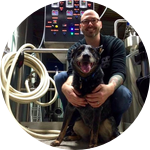Haven't backed any projects yet!
Published on Apr 19, 2017
Sample Preparation
Attached is the sample preparation sheet.
418
4
4
Published on Feb 05, 2017
Samples Prepared for Analyses
Hey all, we found ourselves playing the waiting game over the last few months. Let me explain. After this experiment went public and started getting funding on Experiment.com, we ...
201
0
1
Published on Jul 29, 2016
Updated Sample Set
Briess Malting Company and their lead R&D Specialist, Bob Hansen, has been very helpful in determining what kind of malt samples would be the most useful and informative to conduct the experime...
148
0
6
Published on Jun 15, 2016
Overview of Sour-Mashing Process Conducted by Blue Owl Brewing
Mash-in/LauterMalted barley and water are combined in the mash tun to perform a typical single-step infusion mash. A recirculation is performed on the resulting wort and then the wort is slowly ru...
12
0
3
